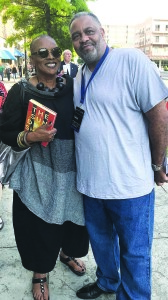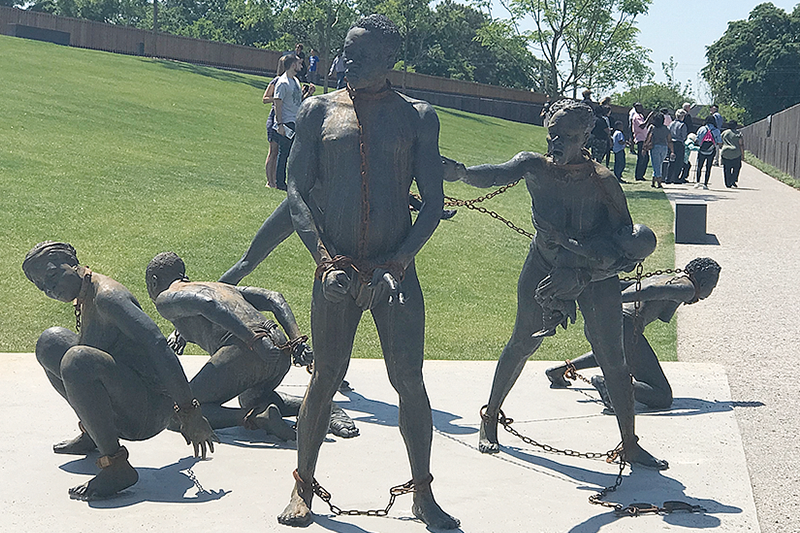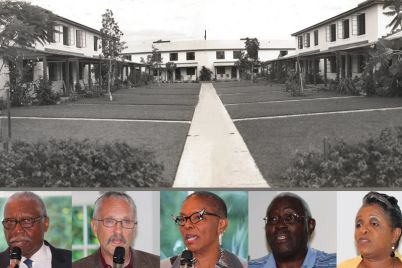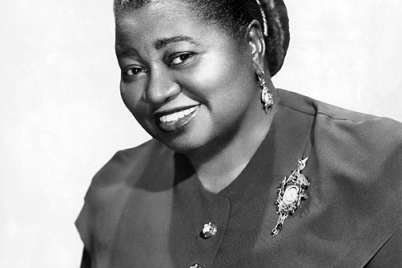By Gwendolyn Reese, Contributor
MONTGOMERY, Ala. – Recently, I was in Montgomery, Ala., attending the Equal Justice Initiative’s Peace and Justice Opening. The two-day event included the unveiling of both the Legacy Museum and the National Memorial for Peace and Justice.
Other highlights included the Peace and Justice Summit sessions and the Concert for Peace and Justice. Thousands of people from across the country and around the world gathered in Montgomery for this monumentally historic event.
My emotions were akin to a rollercoaster: up, down, high, low, angry, rejoiceful. They ran the full gamut; I cried, and I laughed. I shook hands or greeted and talked with various civil rights legends such as Rev. C. T. Vivian and Rev. Jesse Jackson. I had the chance to meet Michelle Alexander, author of “The New Jim Crow” and “The Sun Does Shine: How I Found Life and Freedom on Death Row” author Anthony Ray Hinton, who served 30 years on death row for a crime he did not commit.

L-R, Gwen Reese with “The Sun Does Shine: How I Found Life and Freedom on Death Row” author Anthony Ray Hinton, who served 30 years on death row for a crime he did not commit.
I sat in sessions and was inspired as I listened to the likes of Sherrilyn Ifill, director-counsel of the NAACP Legal Defense Fund and author of “On the Courthouse Lawn.” I also had the pleasure of hearing Dr. William Barber, the architect of Moral Monday; Marian Wright Edelman, Gloria Steinem, Ava DuVernay, Anna Deavere Smith, former Vice President Al Gore, Senator Cory Booker and many other notable personalities.
During the opening ceremony, we were entertained by Sweet Honey in the Rock, Bebe Winans, the Ailey II dance troupe and the incomparable Patti LaBelle. The Concert for Peace and Justice, which was the grand finale of the event, featured Common, The Roots, Kirk Franklin, Valerie June, Usher, Dave Matthews, Jon Baptiste and others and ended with a surprise performance by Stevie Wonder.
As phenomenal as the sold-out events were, the museum and the memorial were why we were all congregated in Montgomery, Ala. We came to be a part of something bigger than any of us individually.
We came to share, with kindred spirits, what we knew would be a profoundly moving, once-in-a-lifetime experience, and we were not disappointed. I am still processing the information I received and the emotions I experienced while there.
Ironically, the Monday before the event was Confederate Memorial Day, a statutory holiday in Alabama and a few other states. This is not a federal holiday, but it is observed under various names and dates in Texas, Alabama, Mississippi, Georgia, Tennessee, Florida and both North and South Carolina.
Thursday: The Legacy Museum
It was an experience, not simply a visit. The museum, built on the site where enslaved black people were imprisoned, traces the roots of inequality and racism through slavery, lynching, racial segregation and mass incarceration/criminalization.
Upon entering the museum, I found myself standing in front of replicas of slave pens, seeing and listening to personal accounts via videography from enslaved men, women and children. There were photographs of newspapers advertising when and where a lynching would take place and covering the lynching including graphic details.
One article concluded that 10,000 people attended a lynching and another article counted 15,000 at another one. There was a photo of a lynched family: mother, father and two children. Lynchings were treated as an event and were attended by white men, women and children.
The museum includes various interactive displays; one such was a map of the United States. Touching any state would open another window with the names of counties. Touching a county would then provide the name(s) of people lynched in that county.
Another display allowed you to touch a screen and see lynching photos with a warning of the graphic nature of the images. The Legacy Museum houses the most comprehensive collection of lynching data in the country. I exited the museum in a state of emotional exhaustion.
Saturday: National Memorial for Peace and Justice
I tried to prepare myself for what I knew would be yet another very emotional experience. The memorial is the first in the United States dedicated to “racial terror lynchings” and the legacy of terror and trauma this created in black communities. There are sculptures throughout the memorial along with text, narratives, writing from Toni Morrison, words from Dr. King and a reflective space.
More than 4,300 lynchings have been documented by the Equal Justice Initiative (EJI), and there are more than 800 steel monuments in the memorial, one for each county in the state where a lynching took place. The monuments are suspended from the ceiling much as bodies were hung from trees, bridges, etc.
As you walk among the monuments, you will see the states and counties engraved on the bottom of each one. When I found Florida, Pinellas County, I looked up to see the names of John Evans lynched in 1914 and Parker Watson lynched in 1926.
In a six-acre park at the site is a field of identical monuments, waiting to be claimed and installed in the counties they represent. I called Senator Darryl Rouson from the site to tell him about the monuments waiting to be claimed and asked him to begin the process to bring our monument home and challenge other Florida senators to do the same. He began immediately to lay the groundwork to do just that.
I concur with the EJI’s statement: “The United States has done very little to acknowledge the legacy of slavery, lynching, and racial segregation.”
The history of slavery, lynching, Jim Crow and their continuing effects must be acknowledged and addressed if we are to eliminate the disparities caused by racial inequality and economic injustice.
When I hear the battle cry of “Make America Great Again,” I am reminded of the words of Langston Hughes in his poem “Let America Be America Again.” The poem speaks as strongly to the America of 2018 as it did to the America of 1935. I will close with an excerpt from the poem.
Sure, call me any ugly name you choose—
The steel of freedom does not stain.
From those who live like leeches on the people’s lives,
We must take back our land again, America!
O, yes,
I say it plain,
America never was America to me,
And yet I swear this oath—
America will be!”












